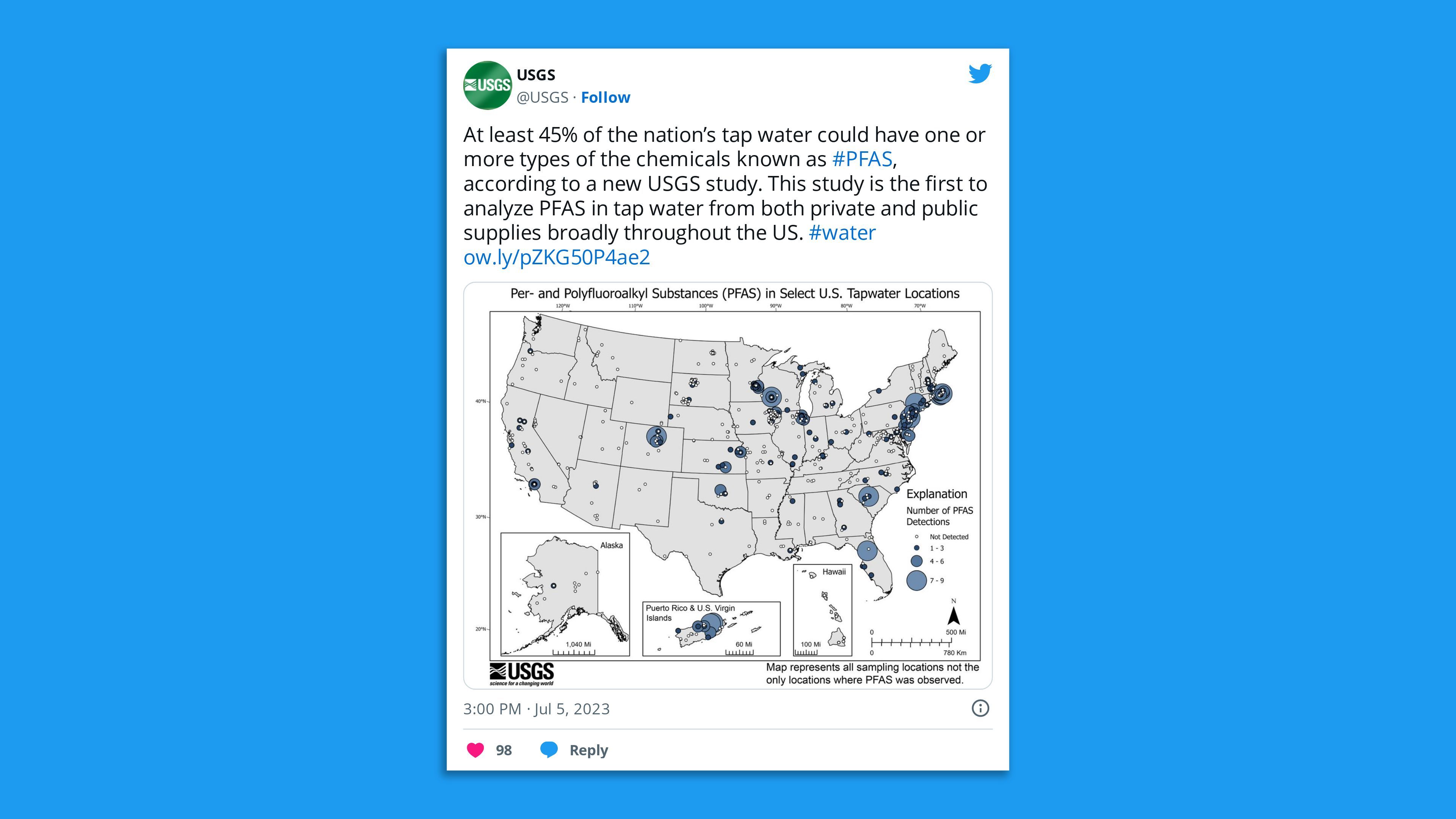At least 45% of U.S. tap water is estimated to be contaminated with "forever chemicals," according to new U.S. Geological Survey research.
Why it matters: Exposure to certain levels of these synthetic compounds, referred to collectively as PFAS, has been linked to adverse health effects in humans and animals, including an increased risk of cancer.
- "Millions of people have been drinking a toxic forever chemical linked to cancer all their lives and are only discovering it today," Scott Faber, the senior vice president for government affairs at the Environmental Working Group, told the Washington Post Thursday.
What they did: The USGS study tested for the presence of 32 types of these extremely durable chemicals in water samples from more than 700 locations across the U.S. over a five-year period and used the data to estimate PFAS contamination nationwide.
- "USGS scientists tested water collected directly from people’s kitchen sinks across the nation, providing the most comprehensive study to date on PFAS in tap water from both private wells and public supplies," said USGS research hydrologist Kelly Smalling, the study’s lead author, in a statement accompanying the study on Wednesday.

What they found: "The study estimates that at least one type of PFAS — of those that were monitored — could be present in nearly half of the tap water in the U.S," Smalling said. "PFAS concentrations were similar between public supplies and private wells."
- The contamination was mostly detected in water sources from urban areas.
- Researchers found the greatest exposures in the Great Plains, Great Lakes, Eastern Seaboard, and Central and Southern California, according to the study.
Of note: The research builds on previous study findings indicating the widespread effects of these chemicals that are used in various nonstick, water-repellent and fire-resistant industrial and consumer products, including cookware, some food packaging and firefighting materials.
- The Environmental Protection Agency issued a health advisory last year saying that newly available science showed that certain types of these per- and polyfluoroalkyl substances were more dangerous than previously thought.
For the record: There are over 12,000 types of PFAS, not all of which can be detected with current tests.
What they're saying: Jamie DeWitt, a professor of pharmacology and toxicology in the Department of Pharmacology and Toxicology at East Carolina University, told CNN she wasn't surprised by the findings.
- "There’s been almost no place scientists have looked where they have not found PFAS," she added.
- Elsie Sunderland, a professor of environmental chemistry at Harvard, said the findings were "alarming," but "I would be careful in extrapolating that conclusion to the entire country" as the sample size was too small, per WashPost.
What we're watching: The EPA proposed in March the first-ever federal regulations that would require utilities to remove the PFAS from drinking water before they reach households and businesses.
Editor's note: This article has been updated with the USGS tweet, comment from professor Jamie DeWitt and further context.







